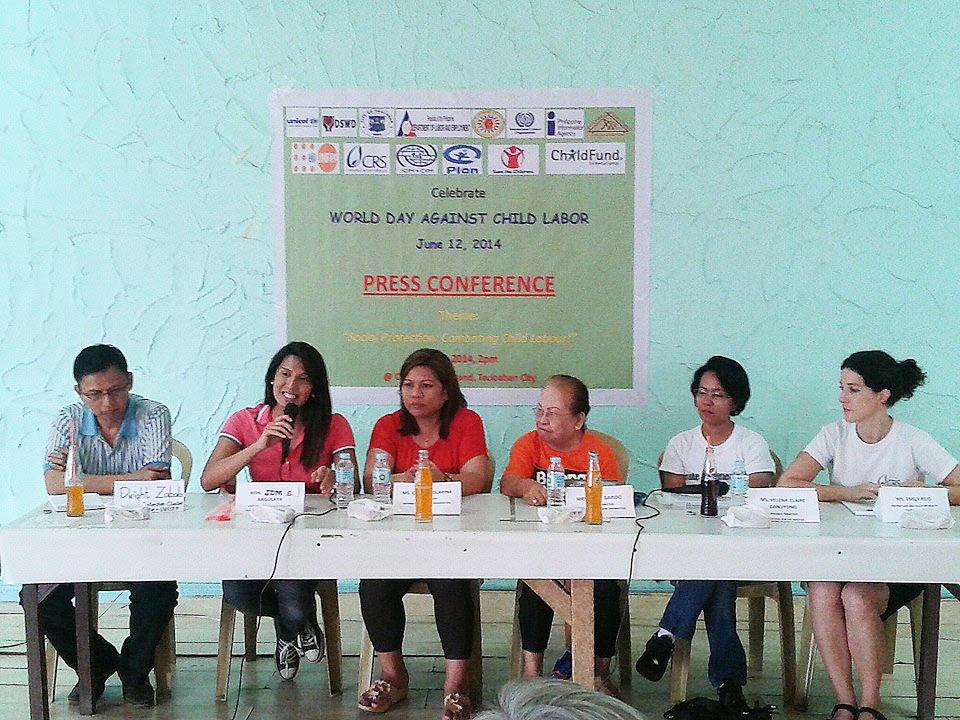
Parents take a crucial role in eliminating child labor in the country, especially among those in the grassroots level and those in indigenous communities whose natives are largely unlettered. This is a emphatically raised by representatives of government institutions and non-government agencies who recently had an interaction with local media to drumbeat the celebration of World Day Against Child Labor bannering the theme “Social Protection Combating Child Labor.” Cecile Colarina of the International Labor Organization reiterated the penal sanction that could be imposed on parents who push their children to forced labor, domestic work, prostitution or other similar lascivious trade under RA 9281. Albeit punitive, the law provides measures that are restorative on the part of the erring parents and other forms of intervention with recourse to mobility of the quick action team that will give focus on this societal menace. The major yoke however is on the funding that the government should give to give teeth to the letter of this law and provide the required half-way home for children in the locality. For now, the ILO-Philippines could not provide a data as to the number of parents who have been subjected to the punitive provisions of the anti-child labor law. “We give parents the time to understand the situation,” Helena Claire Canayong, director of Volunteer for the Visayas, clarified, adding that this will make the problem easier. The ILO reported that there were about 317 million economically active children aged 5 to 17 in 2004, of whom 218 million could be regarded as child labourers, 126 million of which were engaged in hazardous work. It noted a decline in the statistics of child work in that the more harmful the work and the more vulnerable the children involved, the faster the decline .The incidence of child labour (percentage of children working) in 2004 is estimated at 13.9 per cent for the 5-17 age group, compared to 16 per cent in 2000. “The number of child labourers in both age groups of 5-14 and 5-17 fell by 11 per cent over the four years from 2000 to 2004. The decline was much greater for those engaged in hazardous work: by 26 per cent for the 5-17 age group, and 33 per cent for 5 to 14 year-olds. The proportion of girls among child labourers, however, remained steady’” the ILO noted. Oone of the most effective methods of ensuring that children do not start working too young is to set the age at which children can legally be employed or otherwise work,” the ILO advanced, The ILO’s Convention has set the following standards concerning the minimum age of admission to employment and work are as follows. For hazardous work or any work which is likely to jeopardize children’s physical, mental or moral heath, safety or morals, it should not be done by anyone under the age of 18. Basic minimum age for work should not be below the age for finishing compulsory schooling, which is generally 15. Children between the ages of 13 and 15 years old may do light work, as long as it does not threaten their health and safety, or hinder their education or vocational orientation and training. This now fits the meaning of child labour in globally accepted terms that is “work that is prohibited for children of certain age groups. It is work performed by children who are under the minimum age legally specified for that kind of work, or work which, because of its detrimental nature or conditions, is considered unacceptable for children and is prohibited.” Like Colarina, Tacloban City Councilor Jom Bagulaya calls on the full support of all stakeholders on this pursuit, with much emphasis on the role of parents in inculcating the rights values in children, and being true parents to their children not forcing them into work that is detrimental to the well being of the children. Their children should instead be brought back to school and not expose them harmful environment such as child labor.



